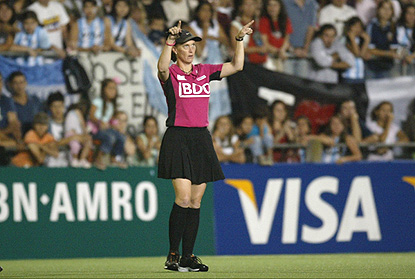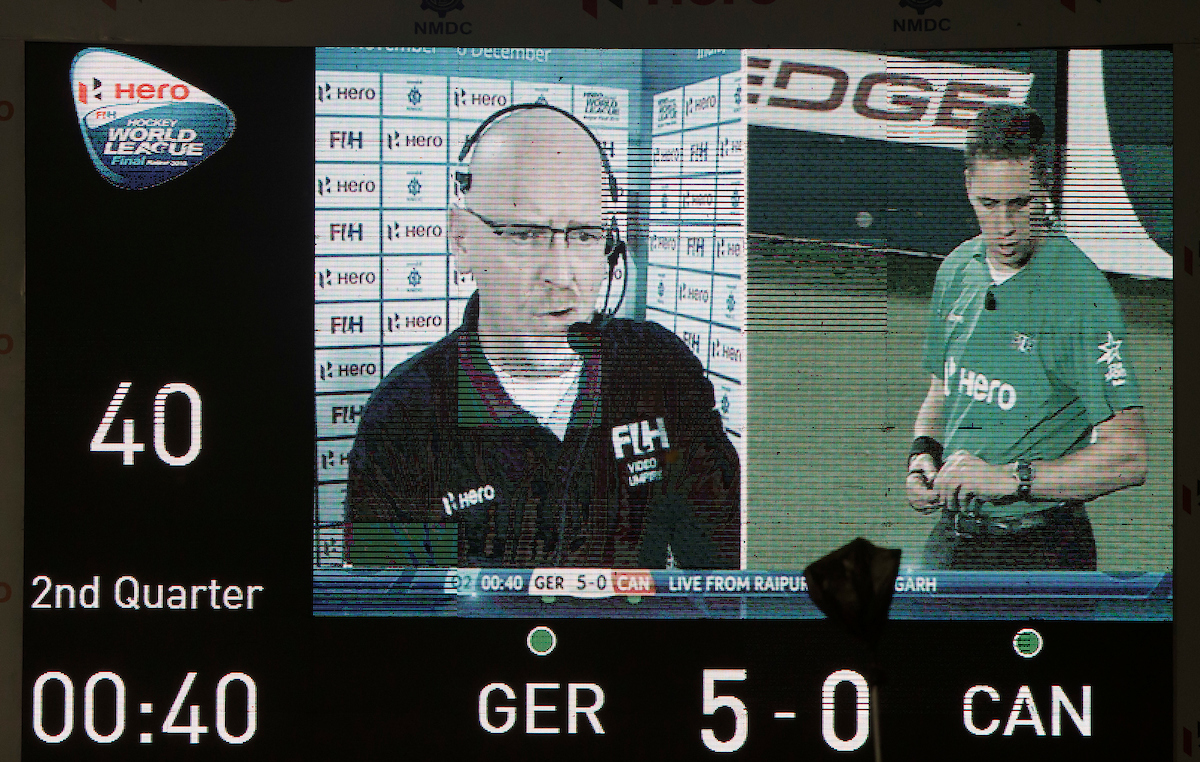By Andy Mair | Hockey Cam
Football, tennis and hockey are sports with obvious differences, but there is one common theme that runs through all of them, the use of video technology to minimise major errors by the talented but fallible human officials.
How does this work within hockey?
Here are a few points to help you start to build your understanding of the process:
- Each team has a single referral to use in a normal length match. They keep that if their challenge is correct, but lose it if incorrect.
- Only incidents within the 23 metre area of the pitch, which are connected to the award/non award of a; Penalty Corner (PC), Penalty Stroke (PS) or Goal; can be referred by the team.
- Any player of the team can ask for the referral by showing the ’T’ signal with their arms to the match umpire. The umpire may then ask a single player to indicate what they are challenging.
- The match umpires can also ask for their own use of the referral process for certain things. They may want to check that a goal/no goal incident is correct, or whether a PS situation is correct. After all, these are potential game changing situations and everyone wants to get them correct if possible. There isn’t a limit on the number of ‘umpire referrals’ that can be used in a match.
Like football, the hockey umpires (not referees) are linked by radio, so that they can talk to each other during the match and to the Video Umpire (VU) when called upon.

You may get to hear them within the stadium or on your tv coverage? But you should also be able to see some video replays of the challenged incident on the pitch-side screens, if you are lucky enough to be inside the stadium, to help you understand and learn more about the rules and decisions.
Listen out for terminology such as; “no clear reason to change your decision”, which will indicate that a team challenge is likely to be lost; “ I have a decision for you”, which is likely to be followed by a correction to the ‘on pitch’ decision: or “no advice possible”, when the VU cannot get a definitive angle or clear view of the incident, meaning that the team keeps their referral for future use and the original umpiring decision remains.
The so-called ‘easier’ decisions for the VU are when they are questioned about a matter of fact, such as a “defender’s foot inside the shooting area”, then hoping that the camera angles enable a quick resolution.
The ‘trickier’ areas are when ‘interpretation’ creeps into the decision, such as ‘danger’, after all, your idea of danger may be different from my own.
There are times when (as the VU) you need to take a deep breath and swallow hard before communicating your decision to the on-pitch umpires and waiting hockey world.
So, maybe have a little sympathy with the VU, particularly when it’s a difficult scenario to be unravelled? It is not as easy a job as you may think!
There are quite a few variables on the basic aspects that we have highlighted above.
This article was first published in 2018
Andy Mair has umpired at World Cups and Olympic Games, as a specialist Video Umpire at the 2014 World Cup and 2016 Rio Olympic Games
Guide to watching professional hockey: Rules and coaching tips




